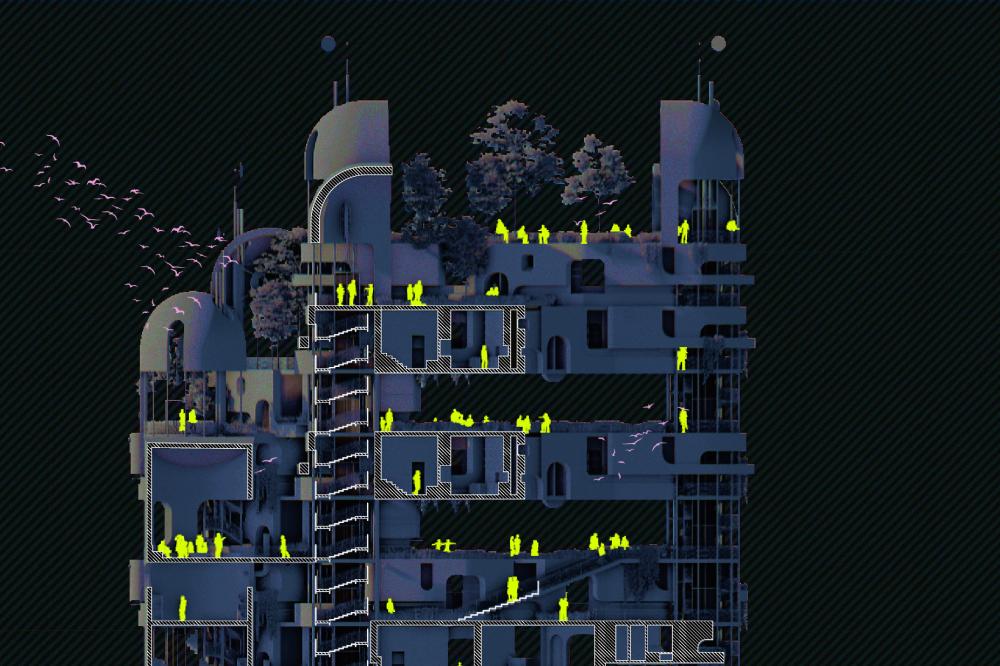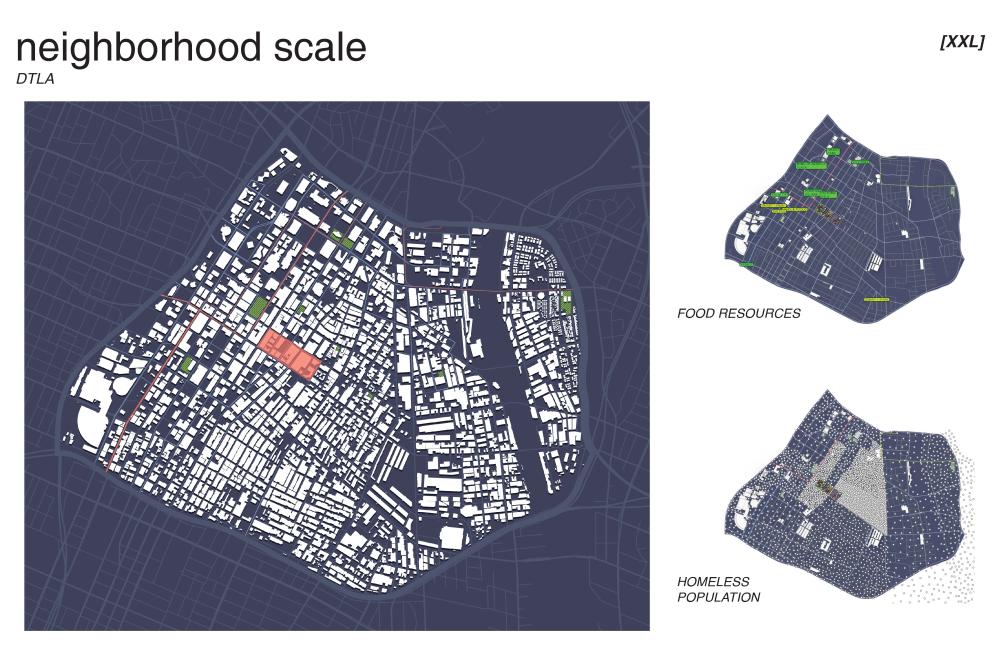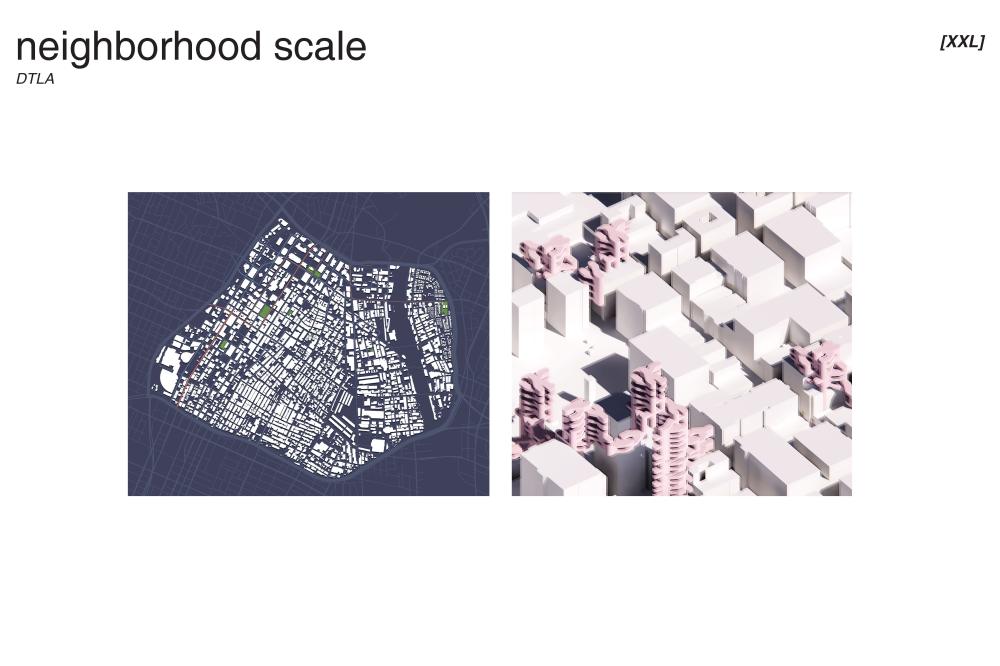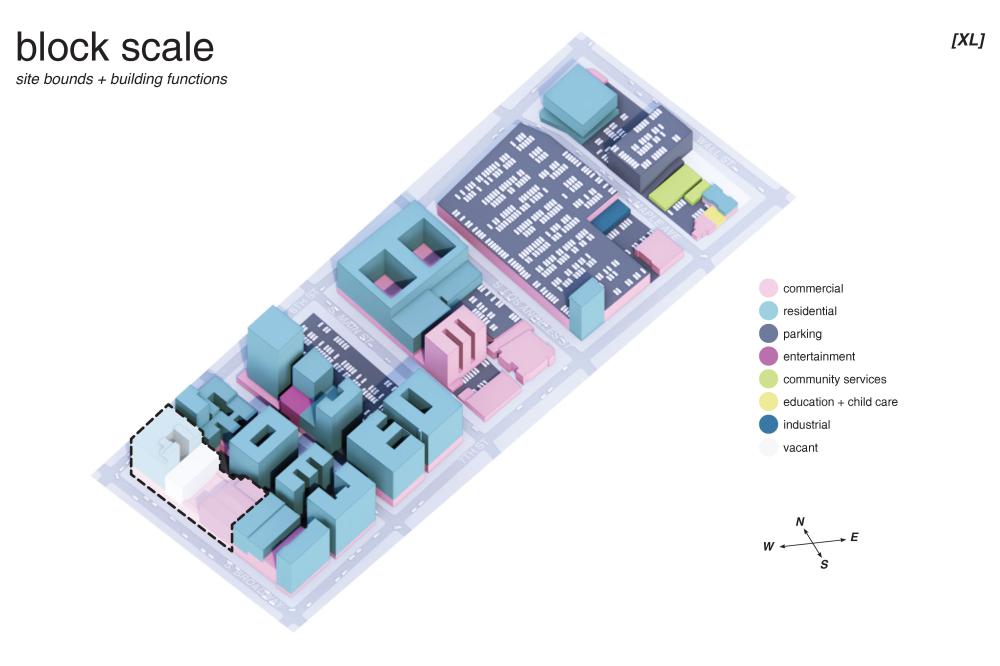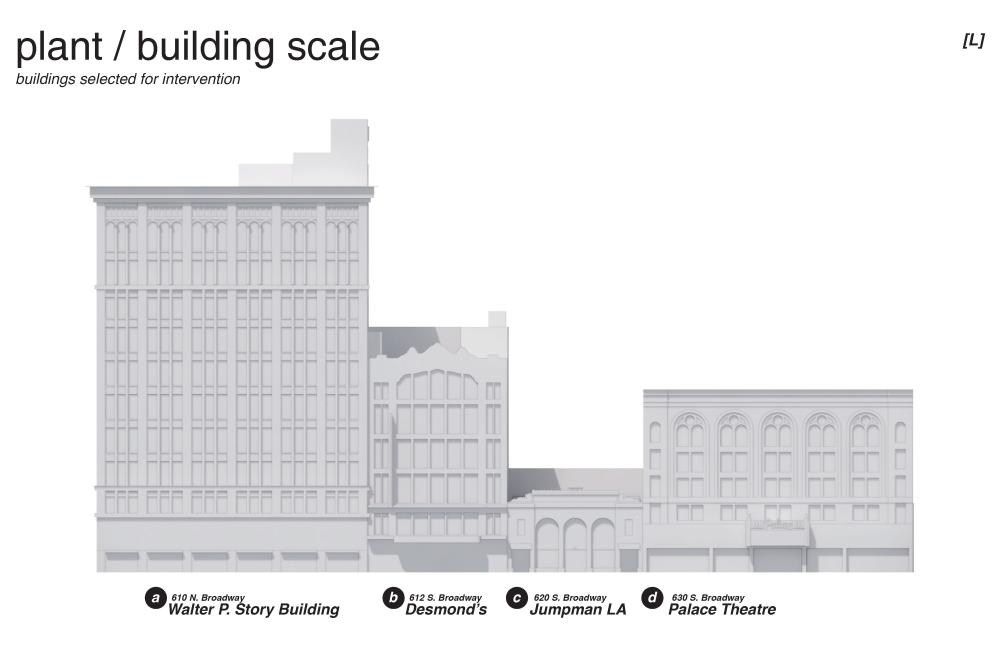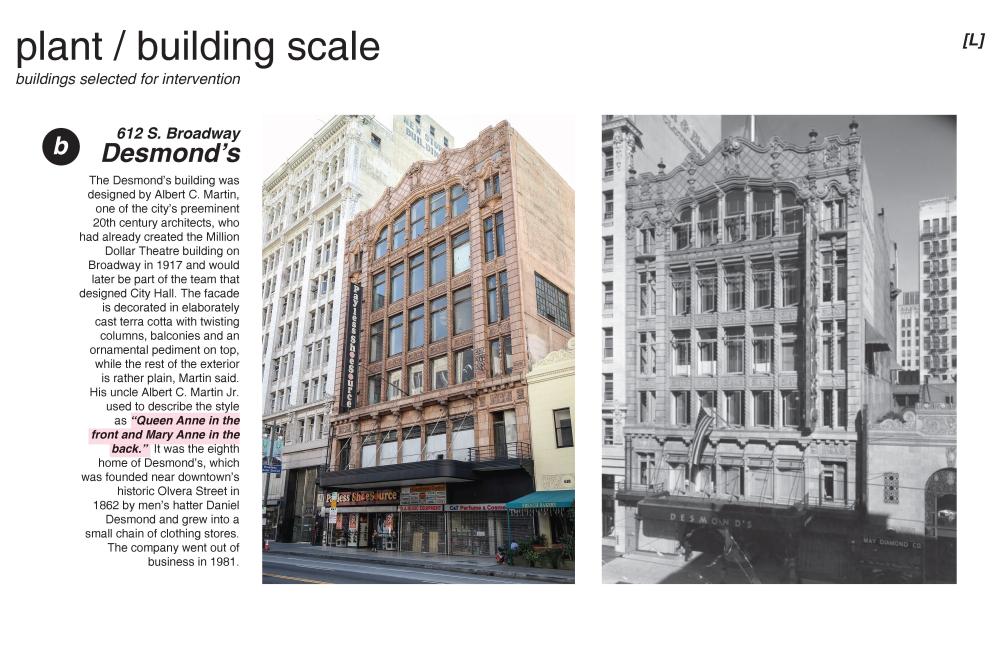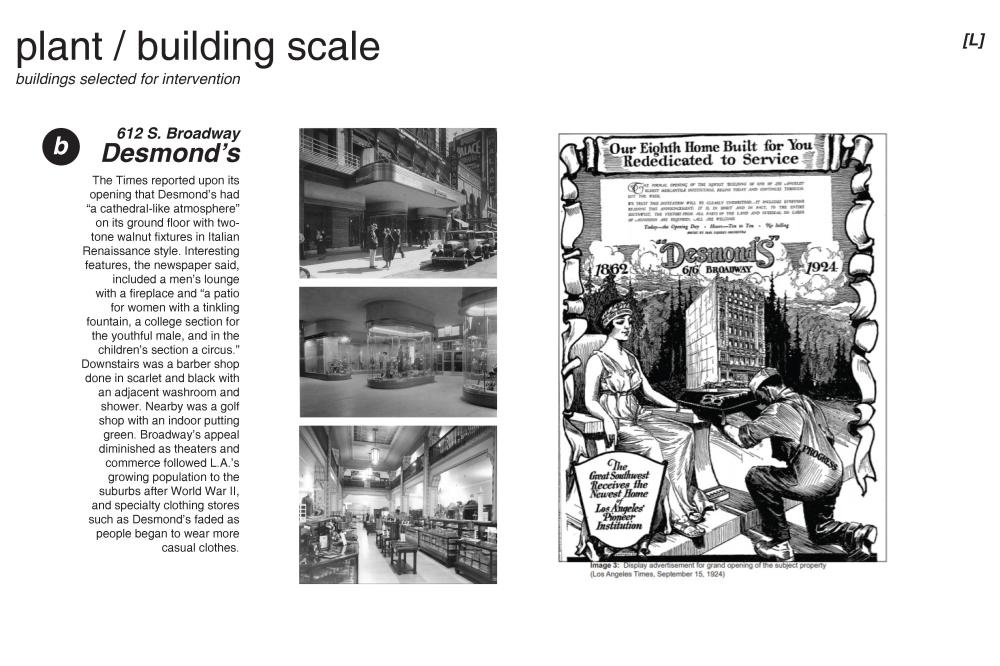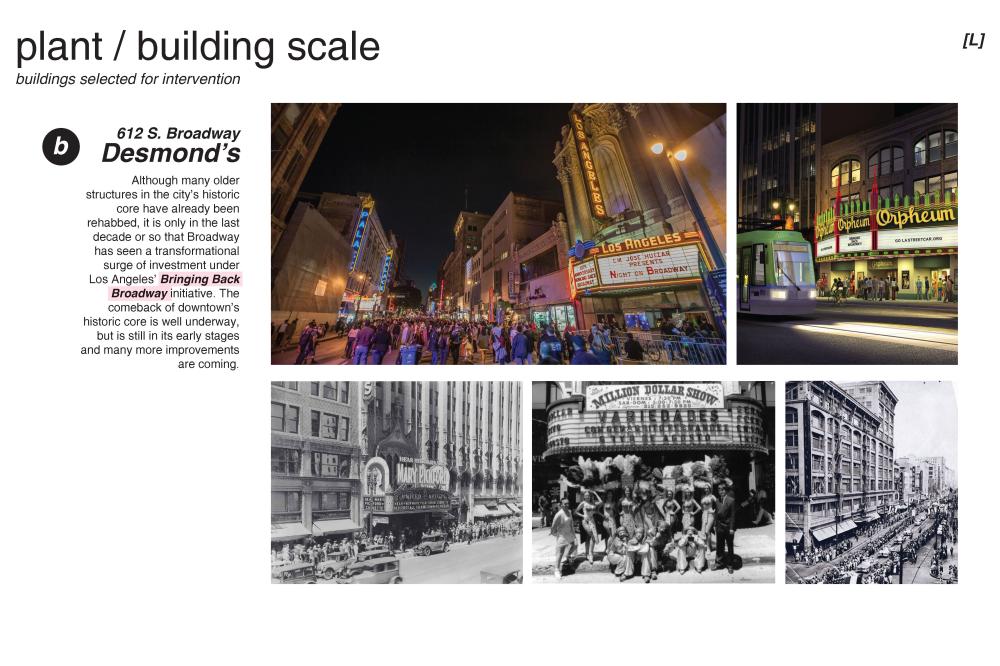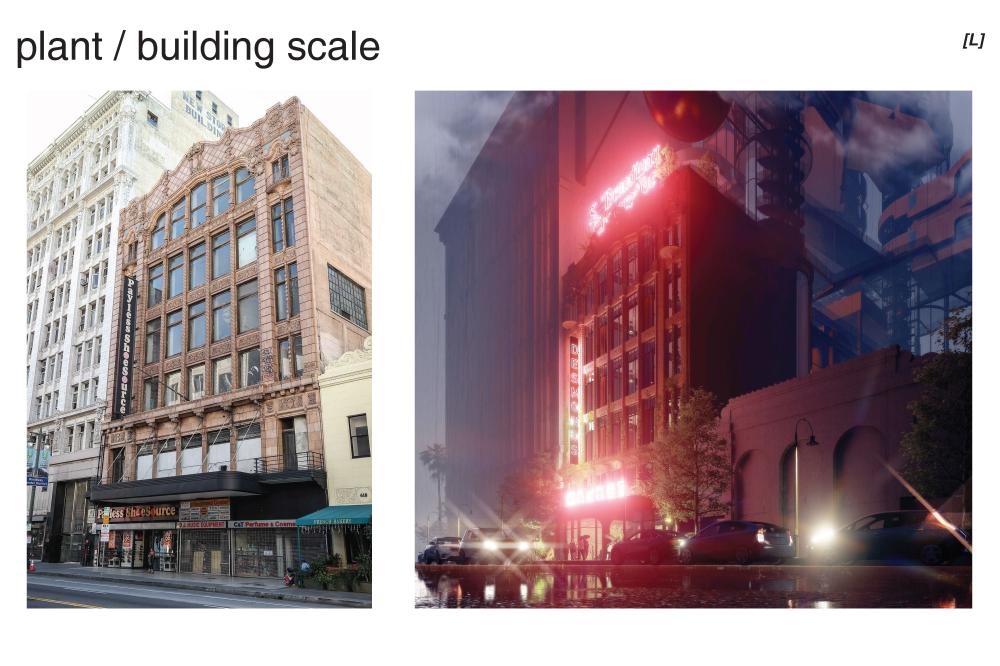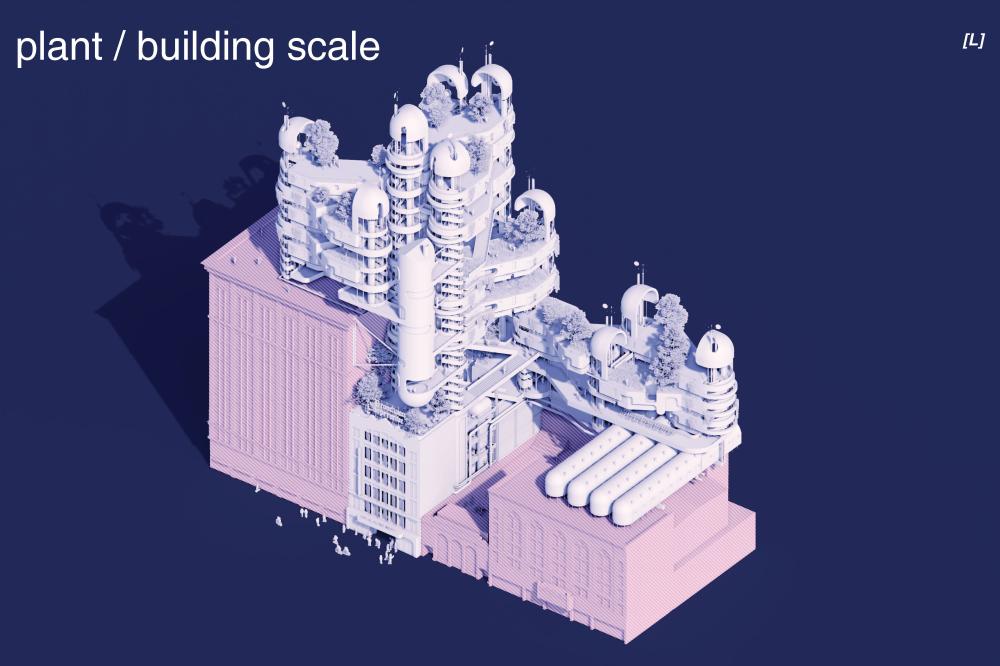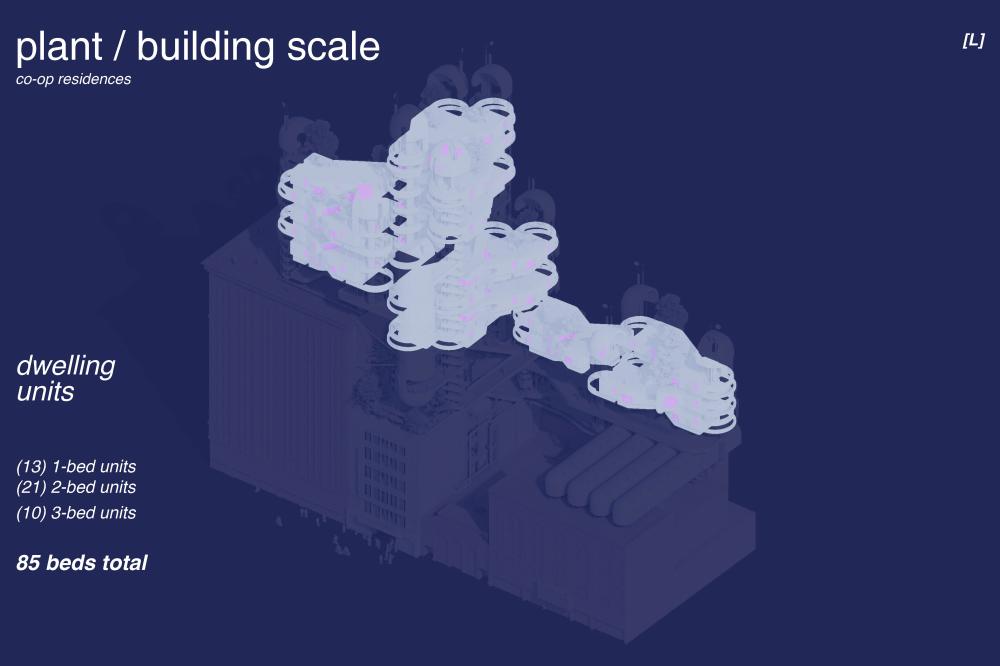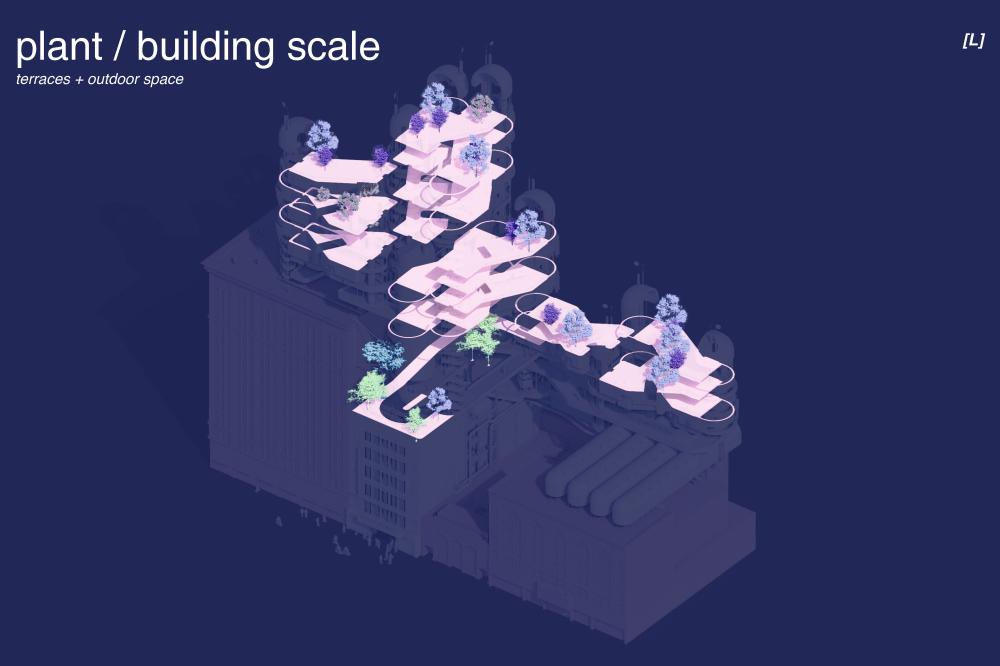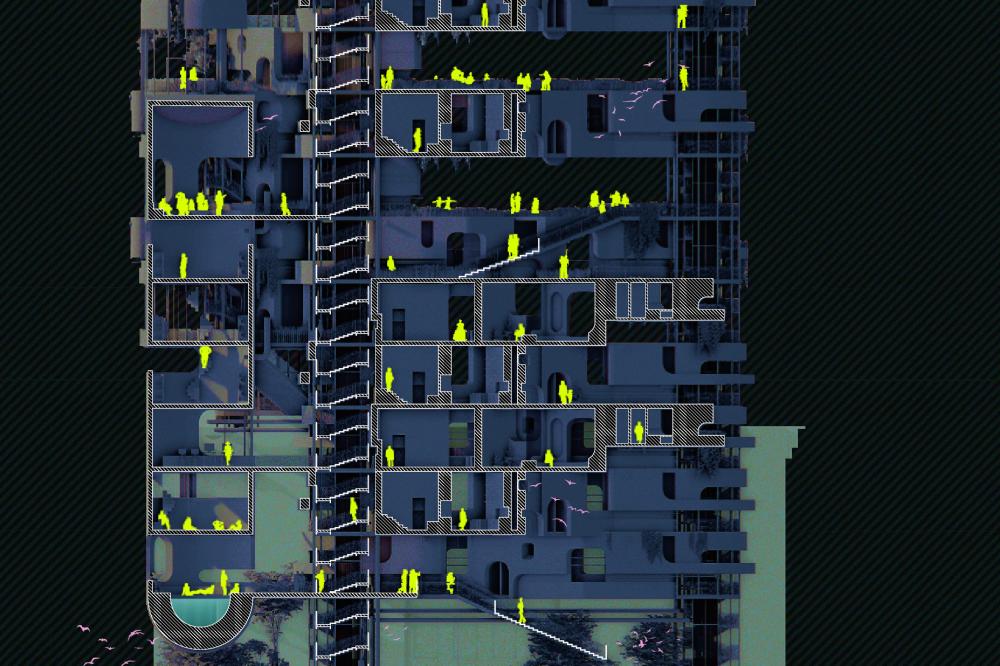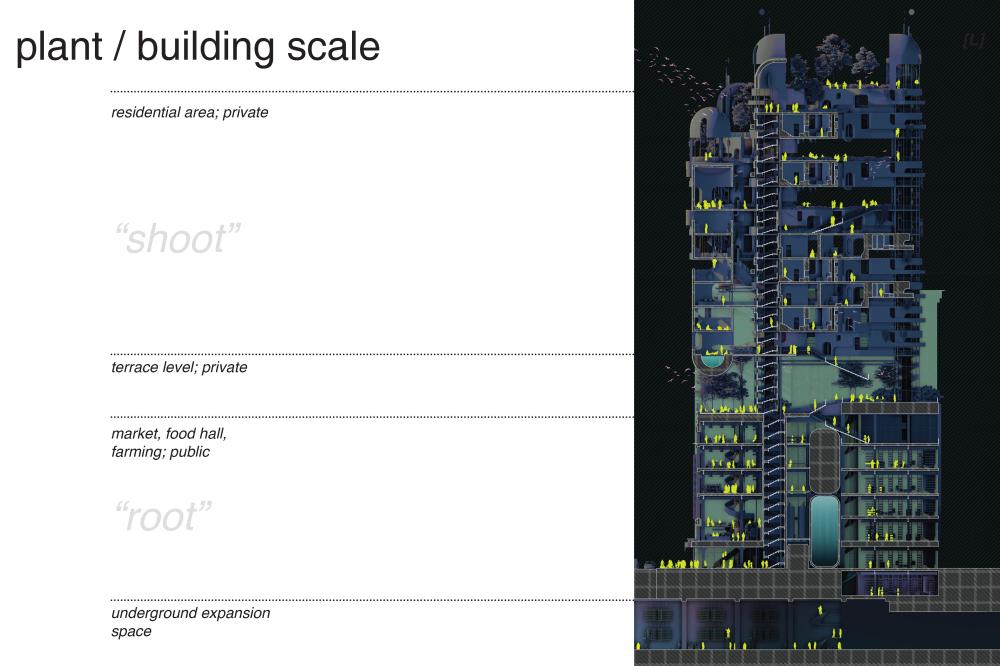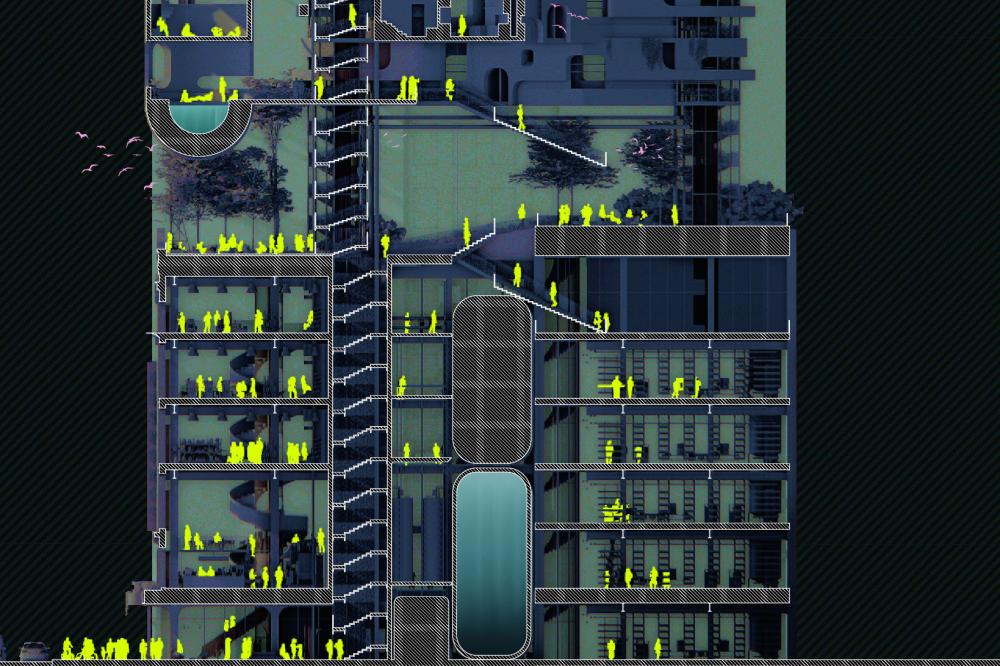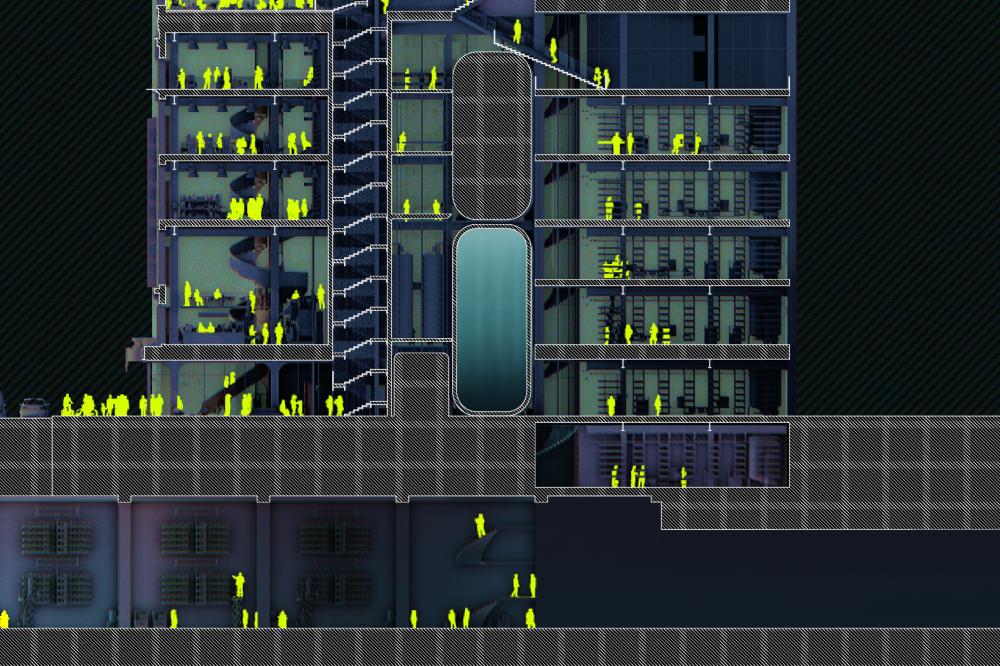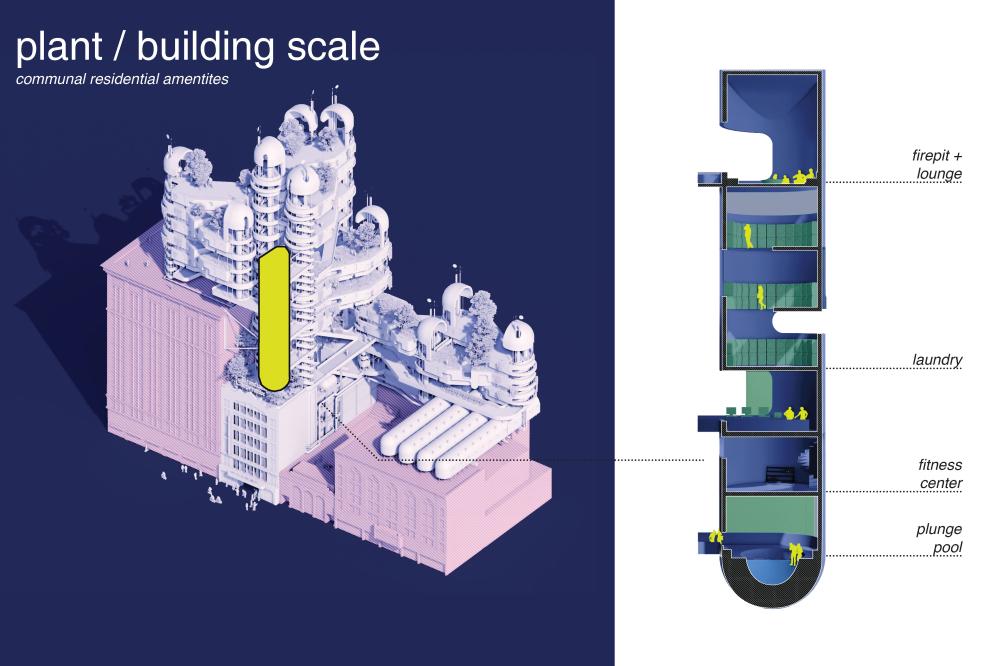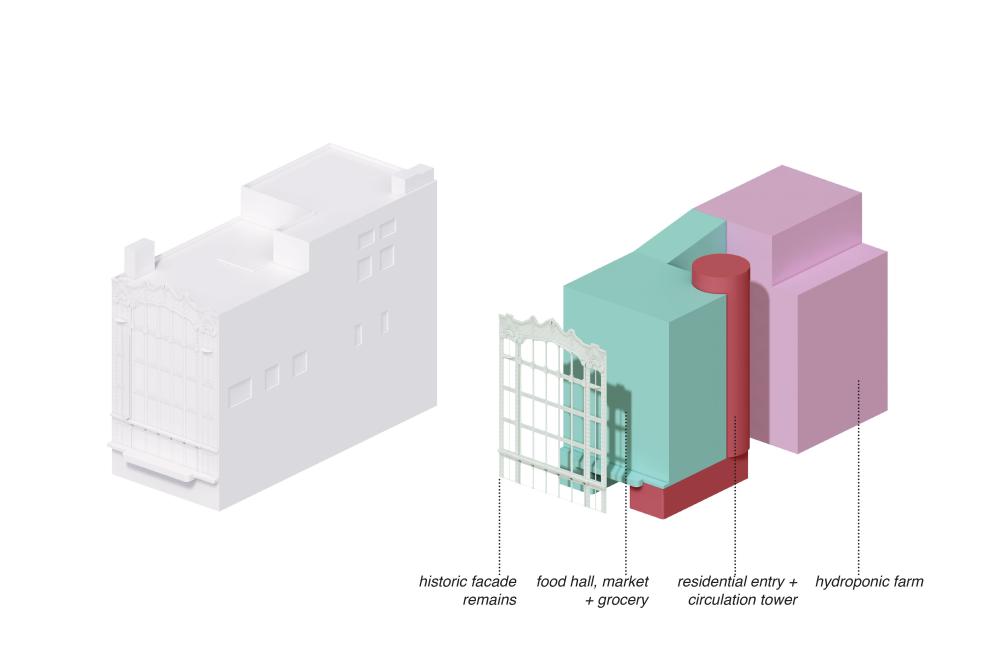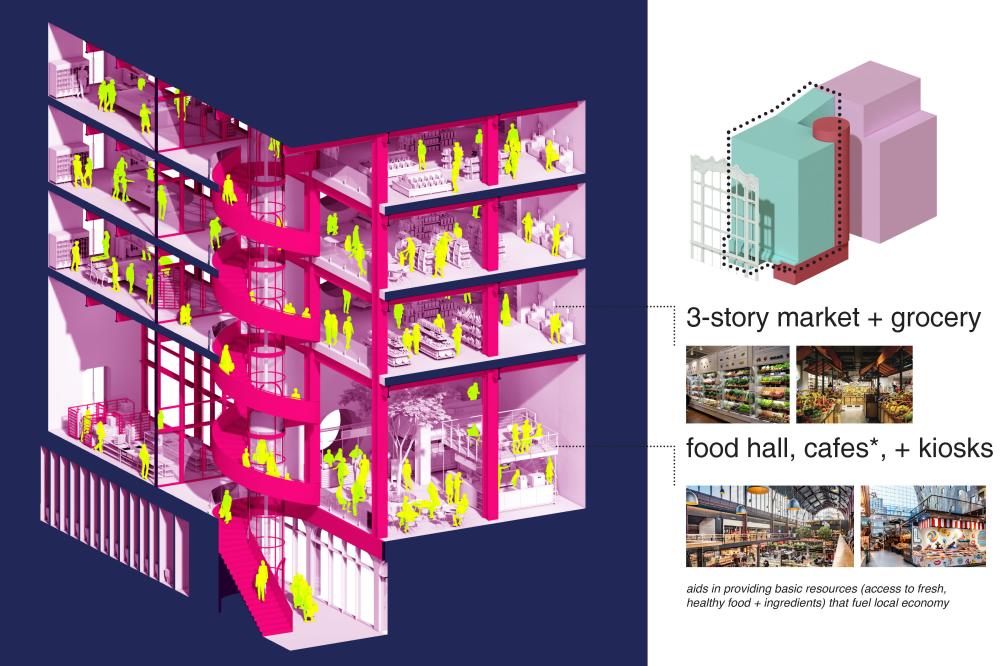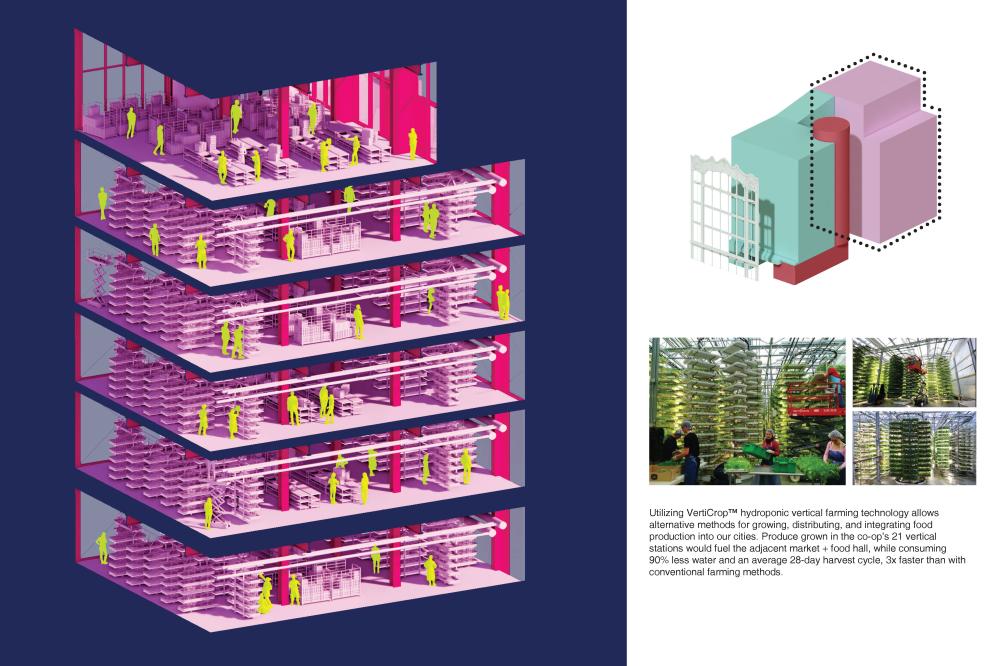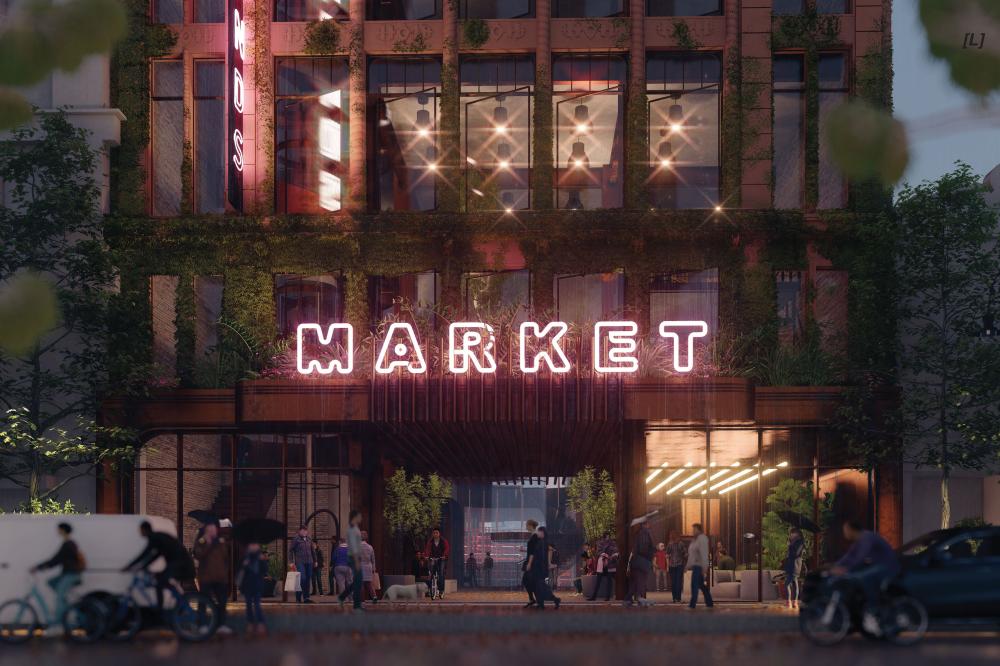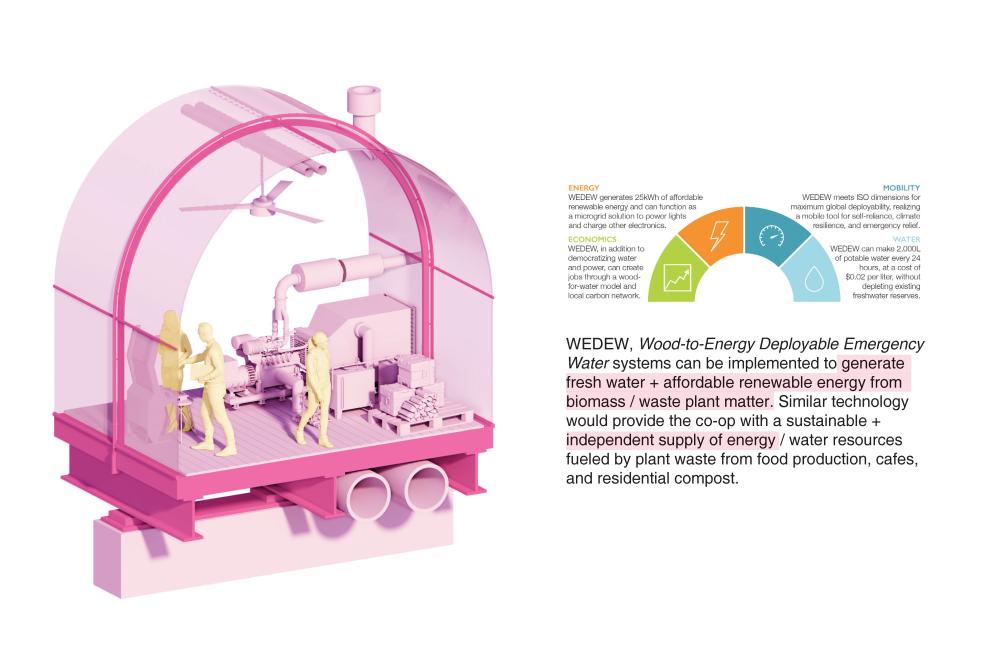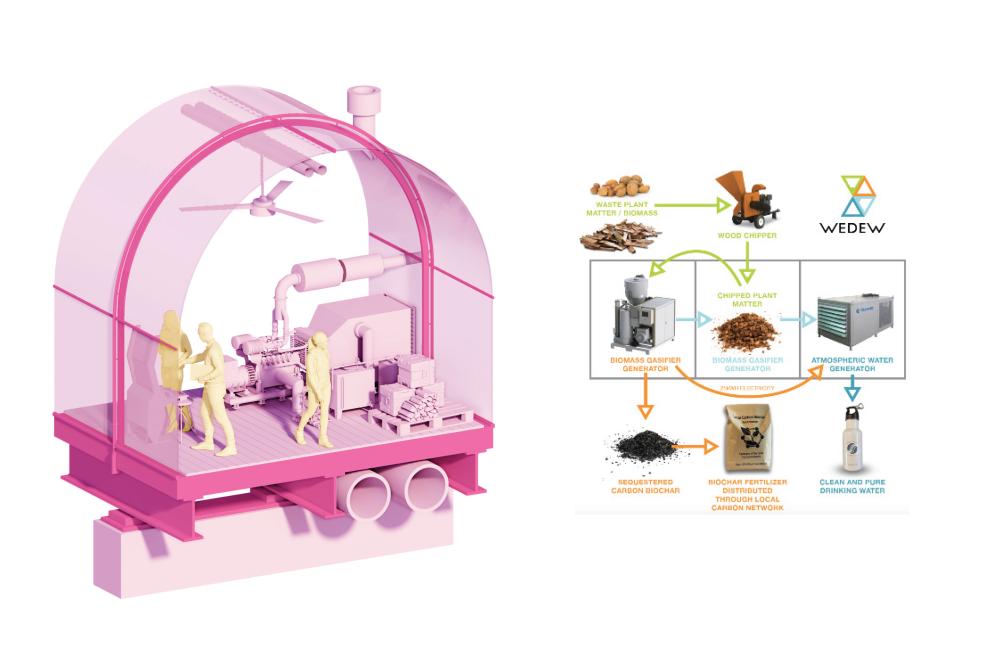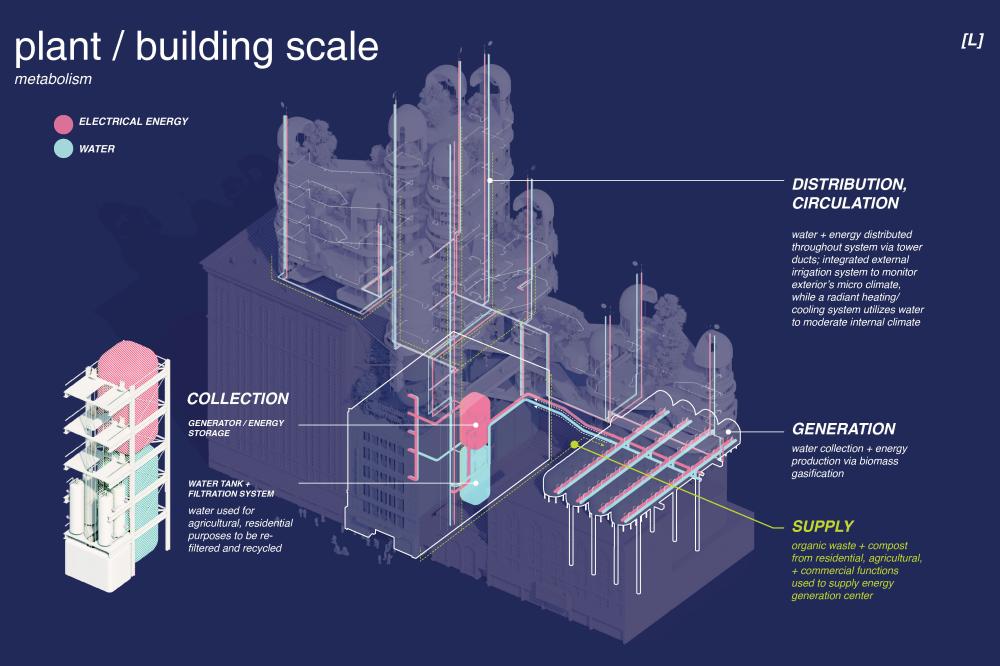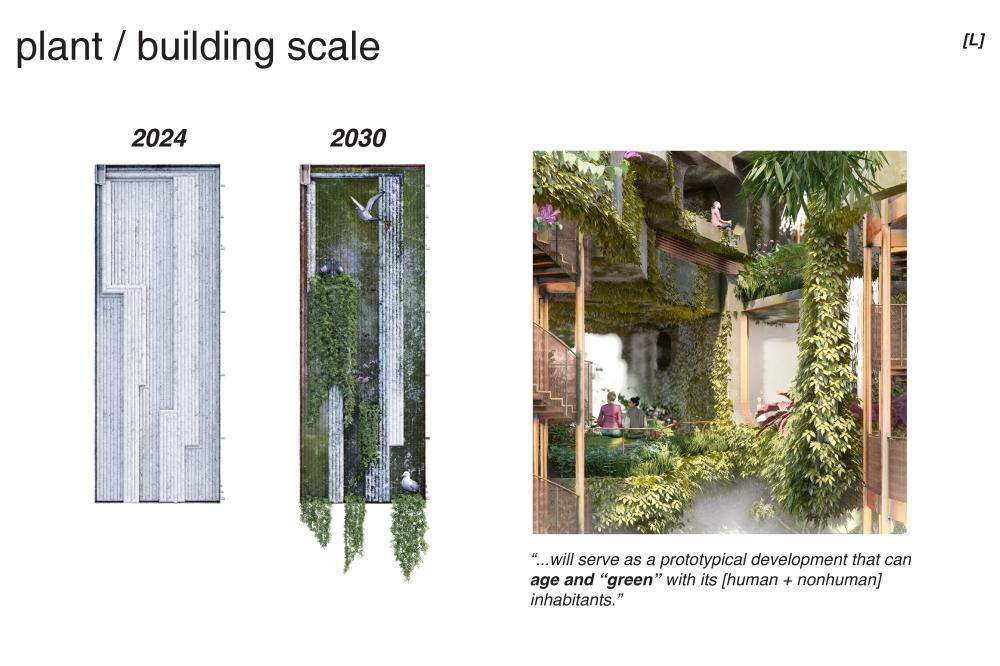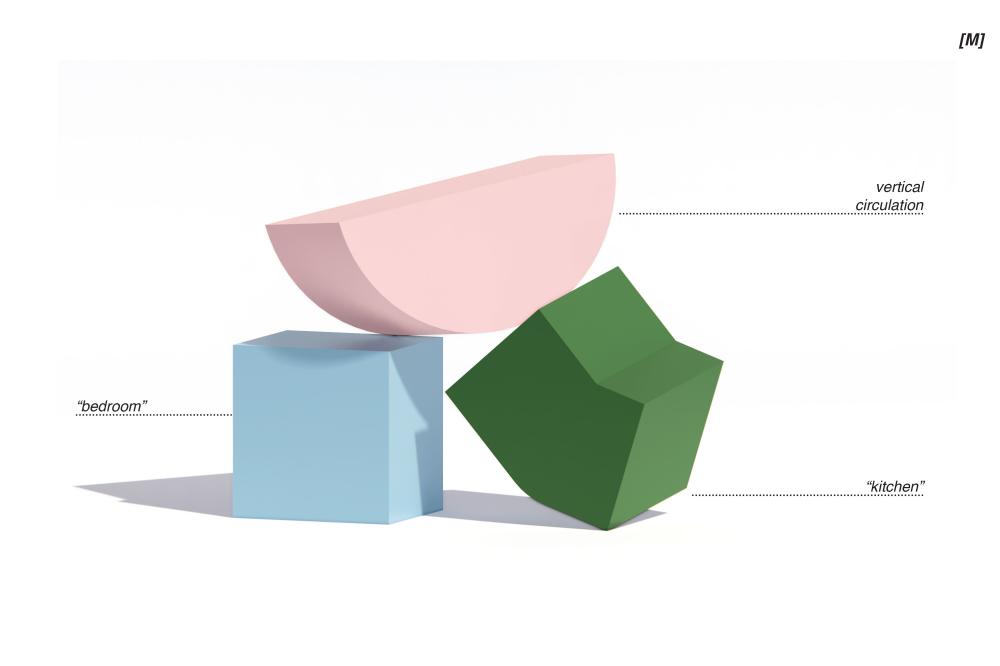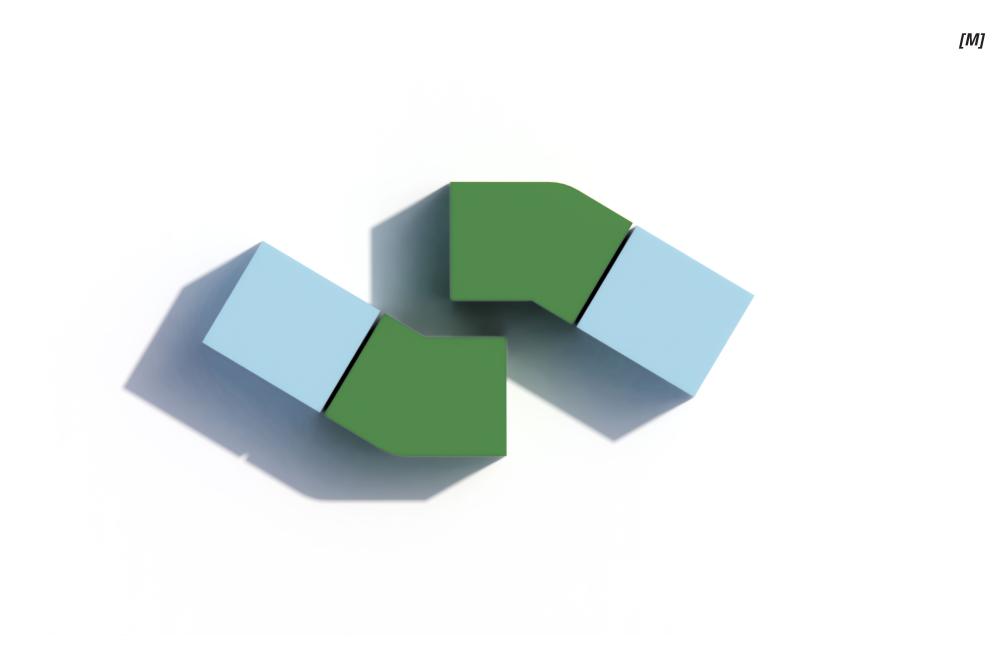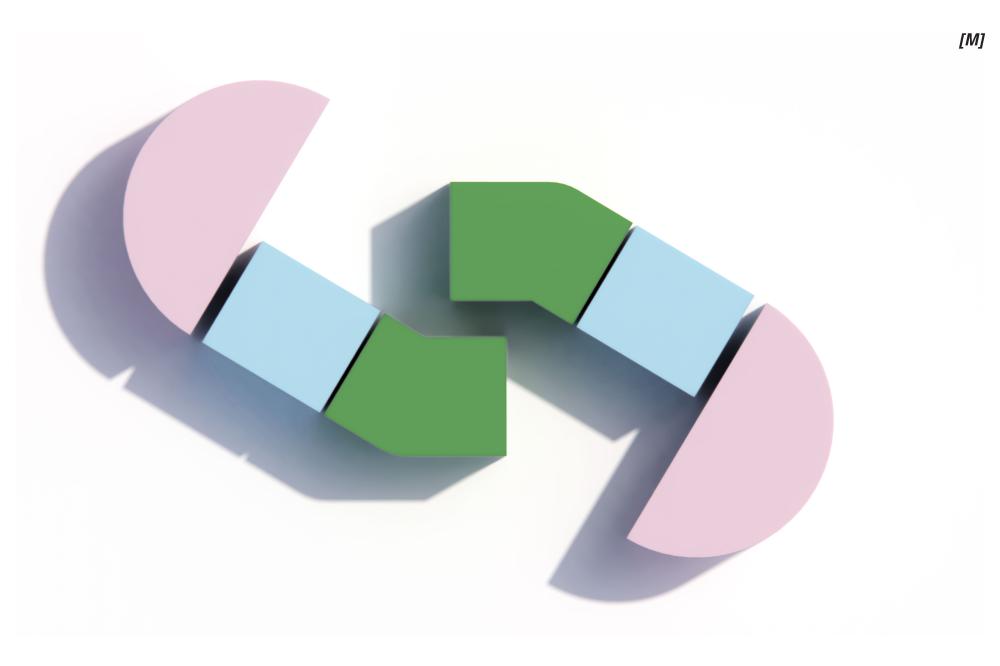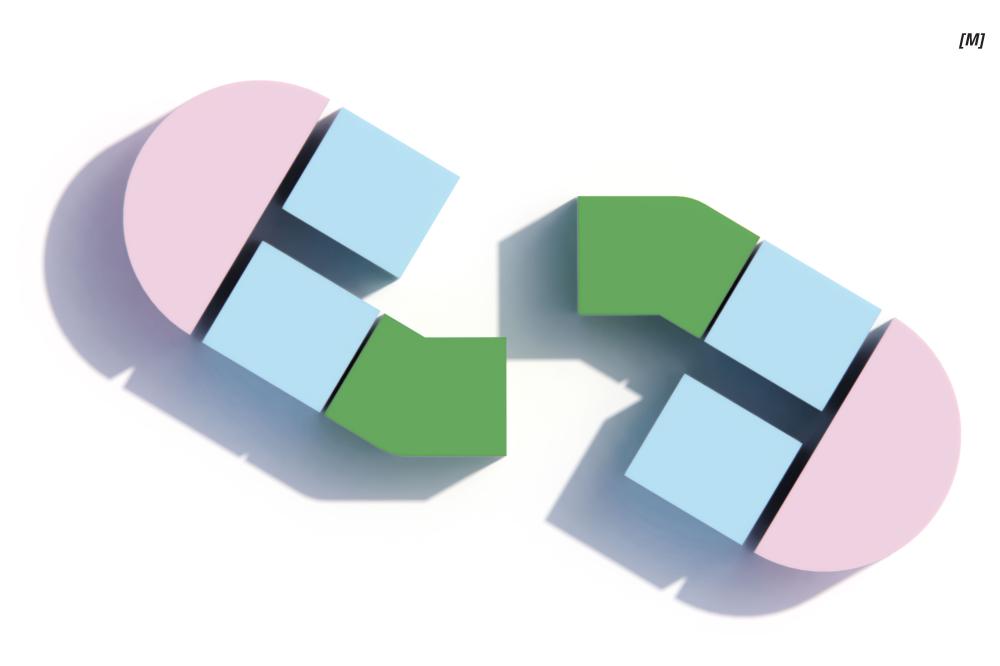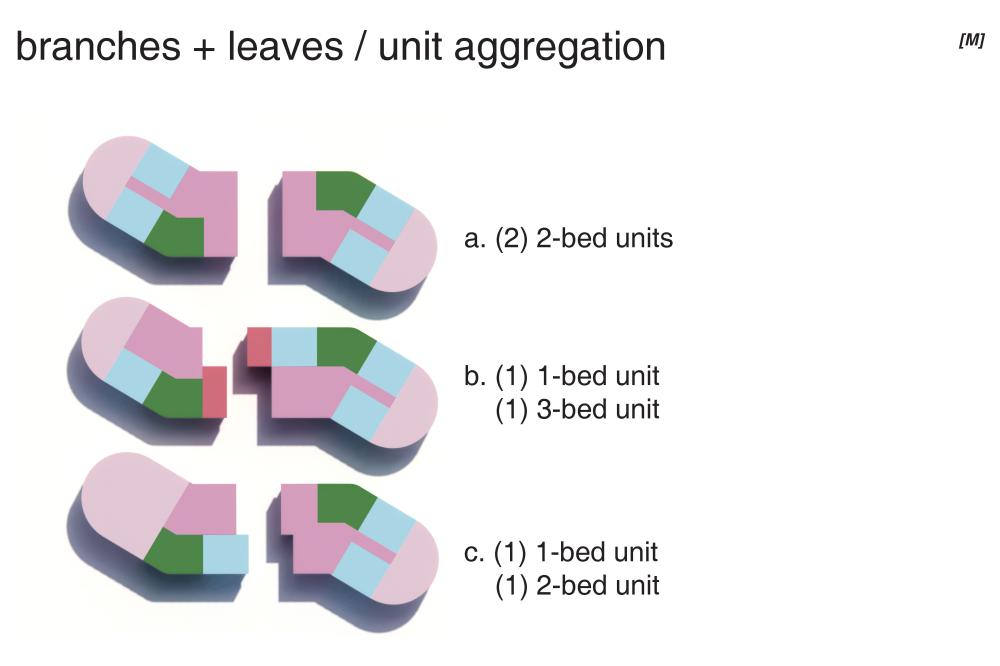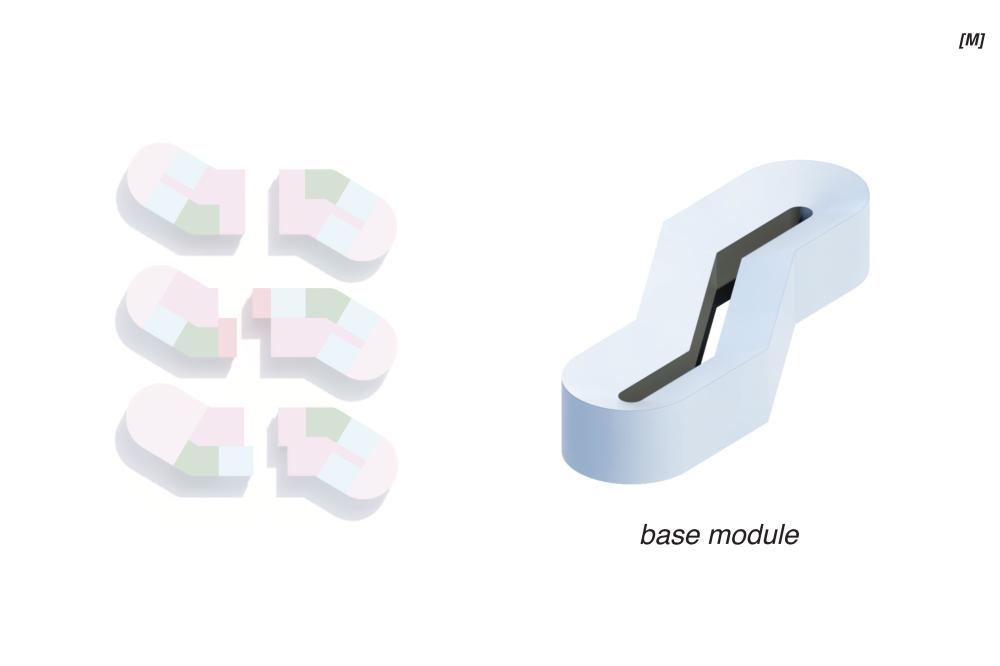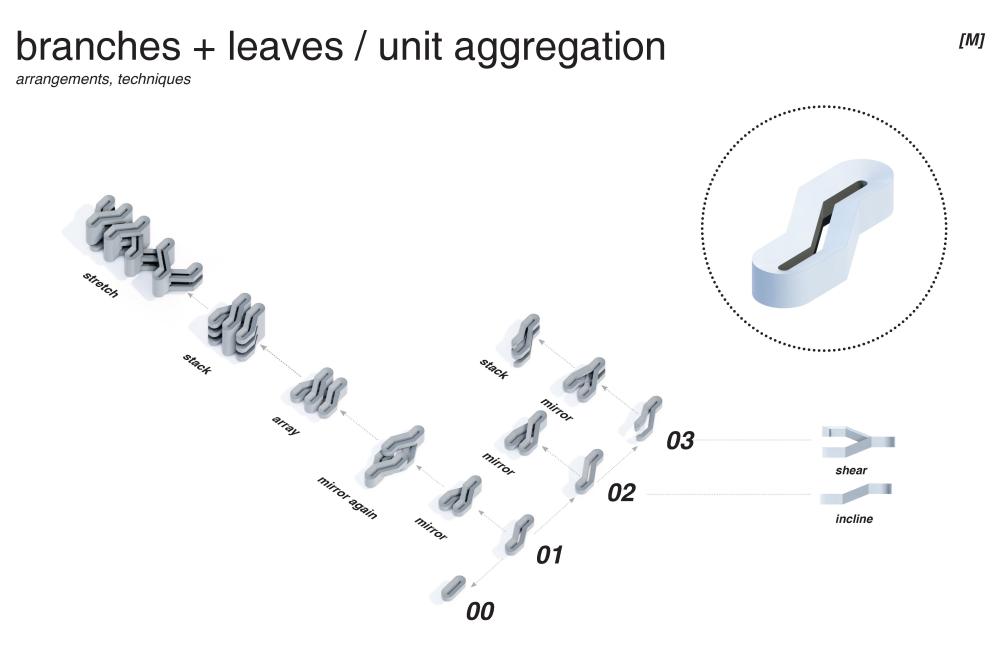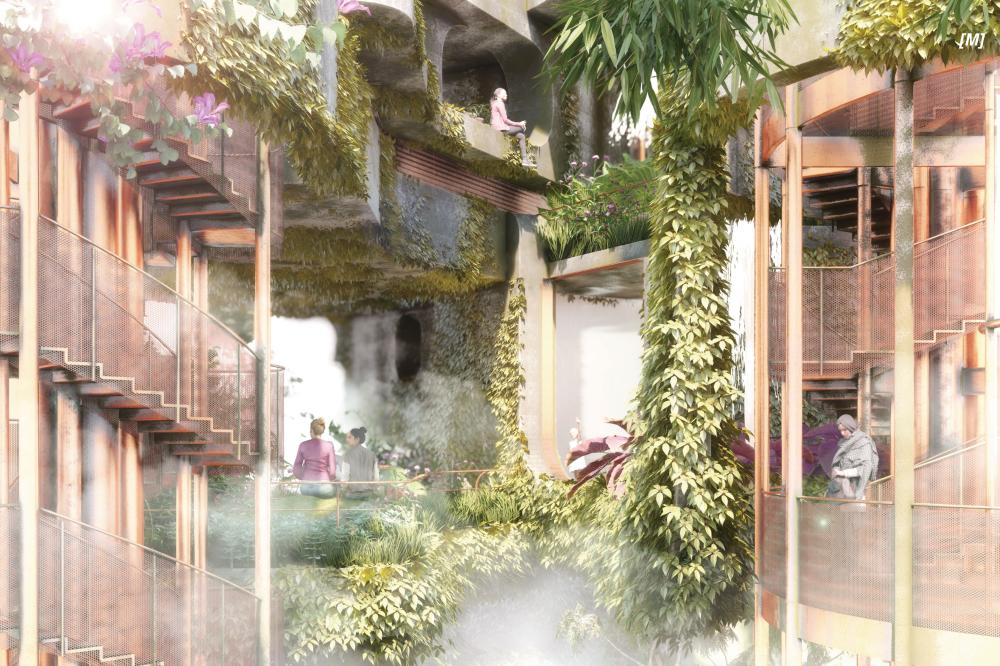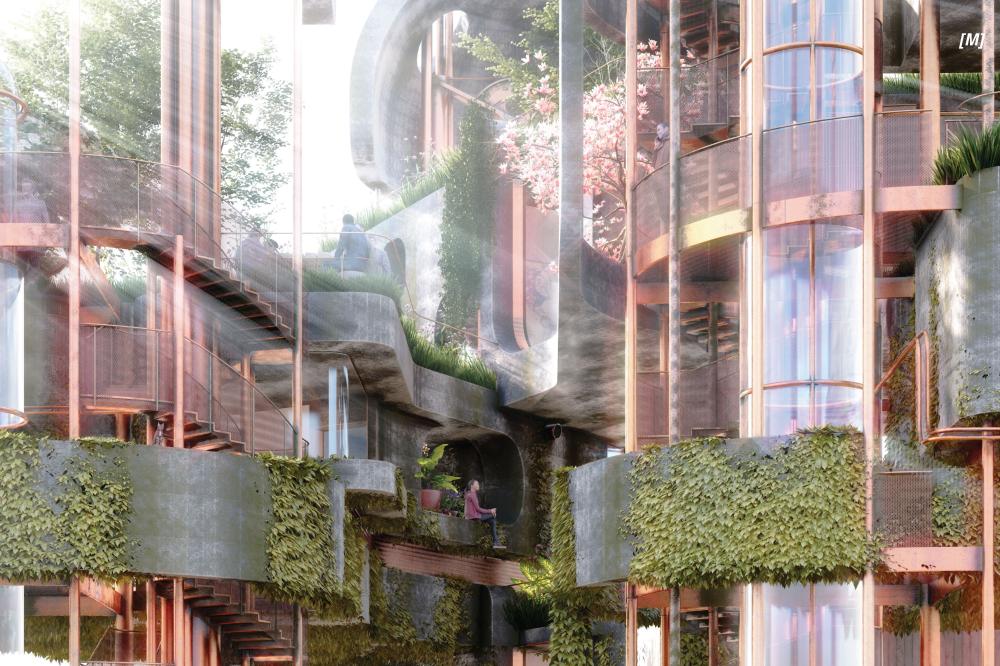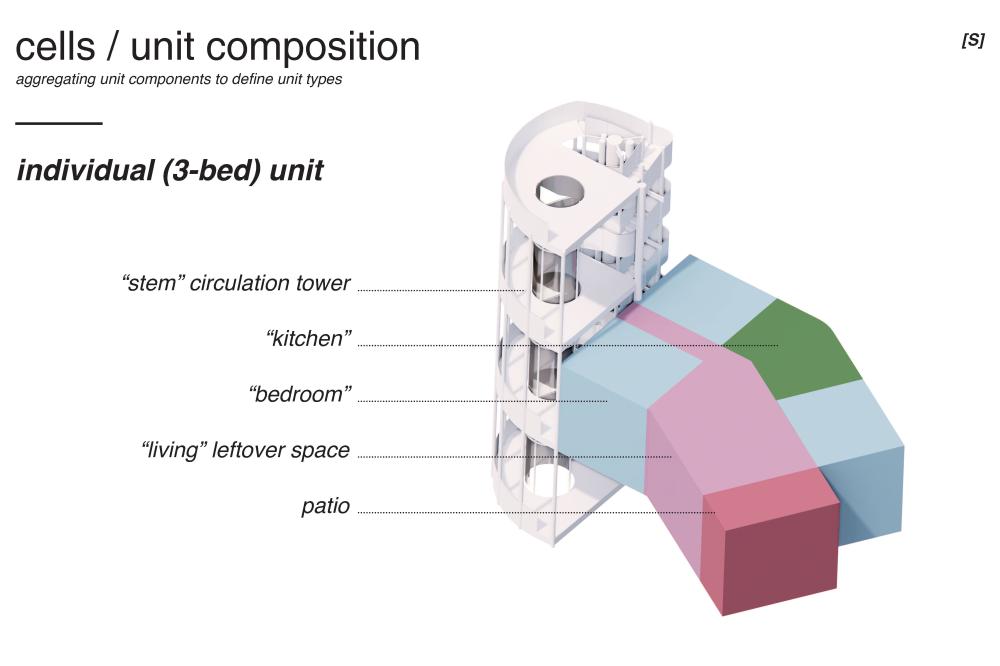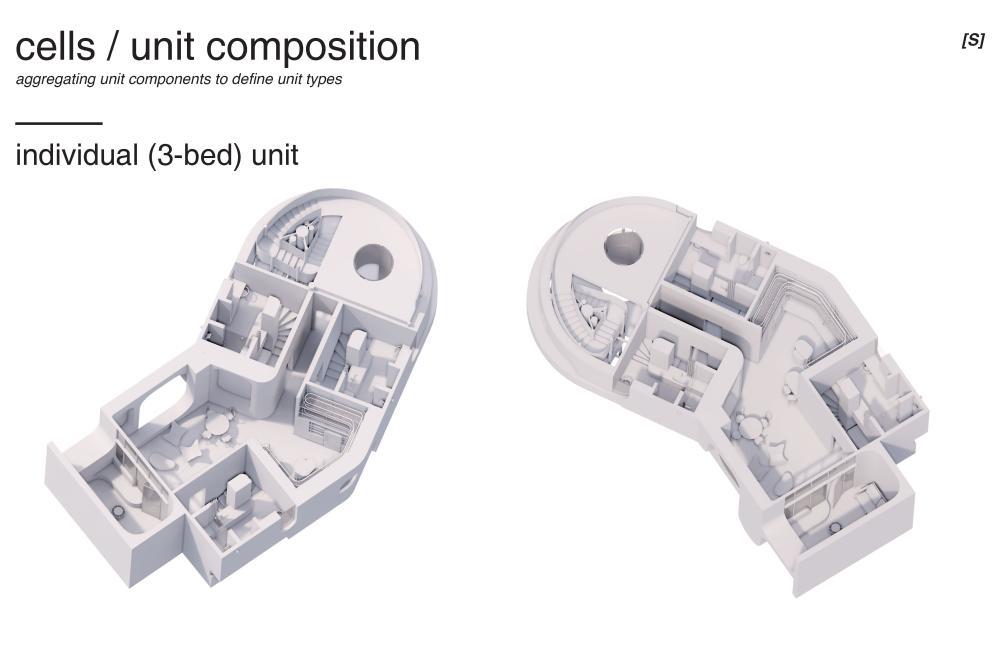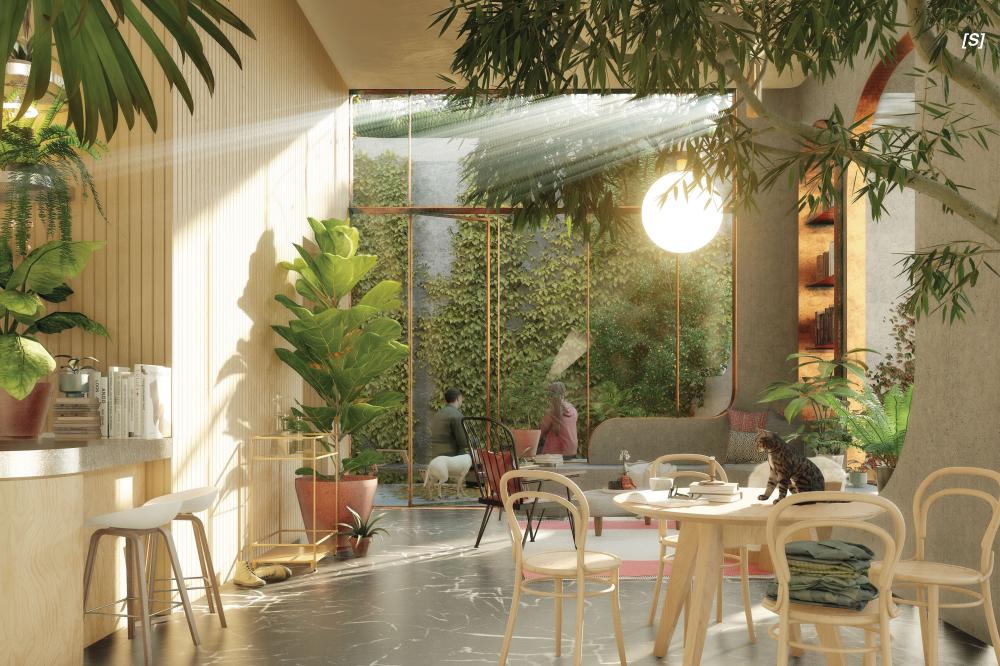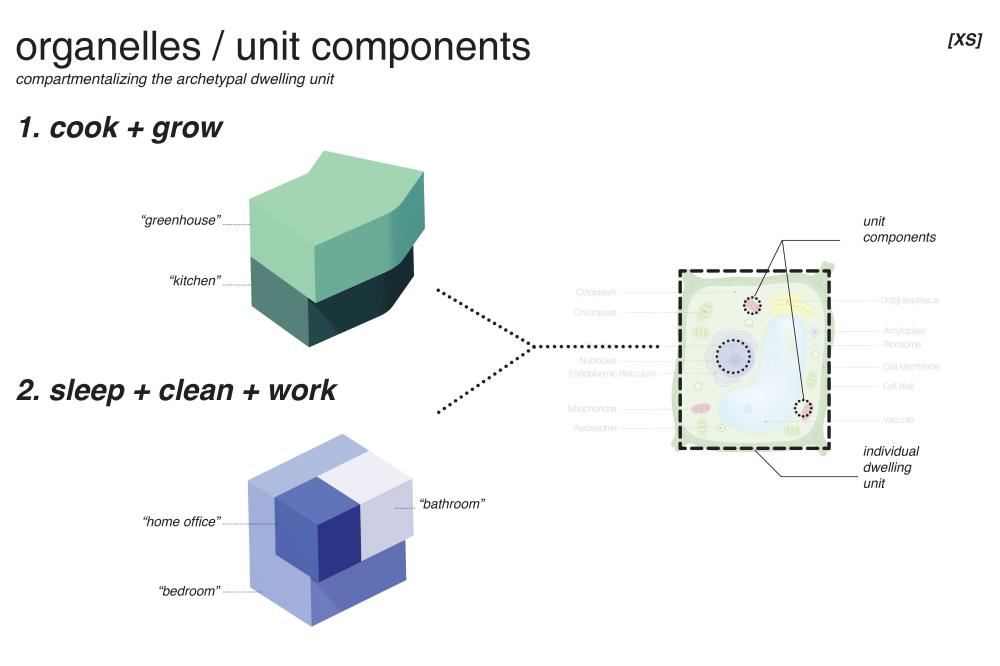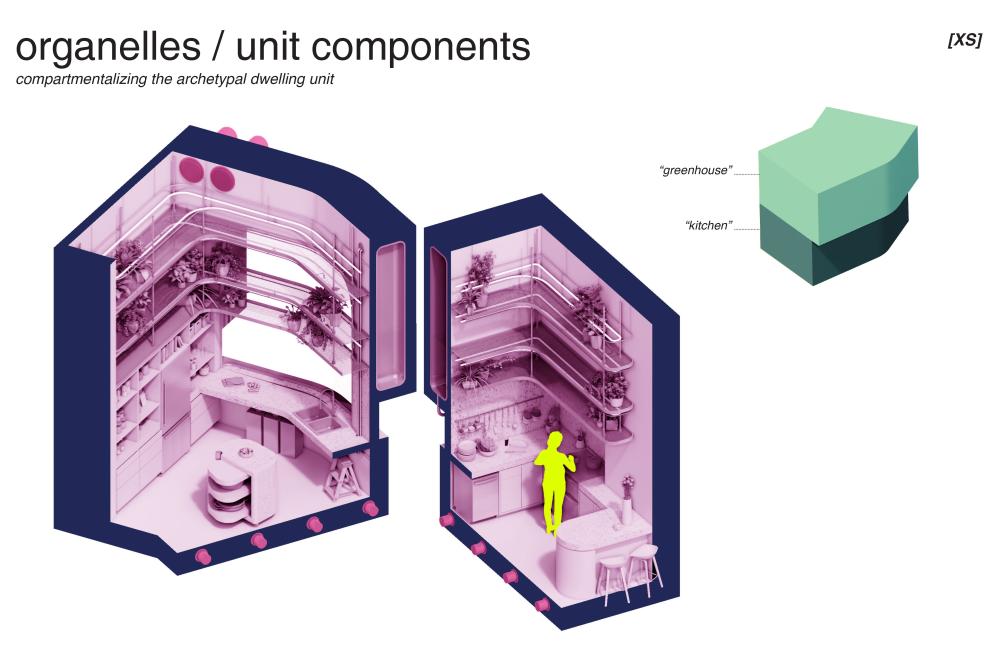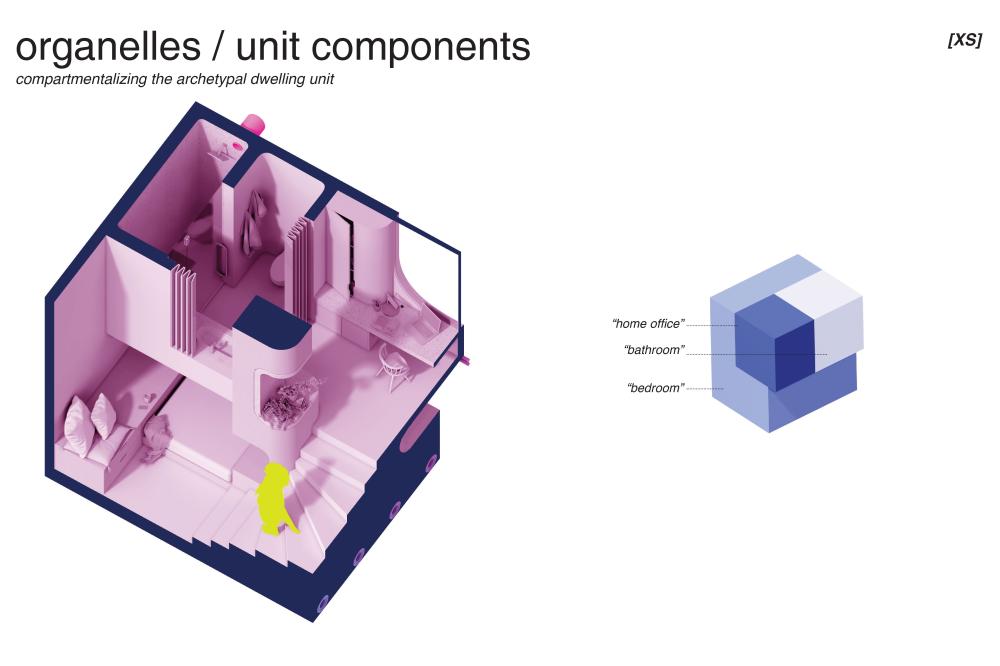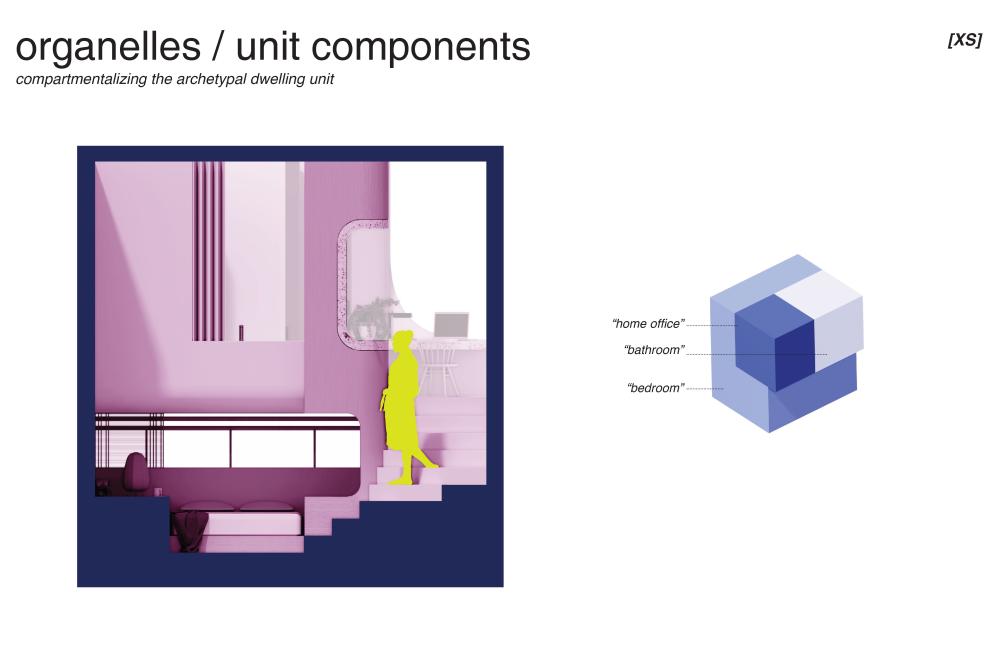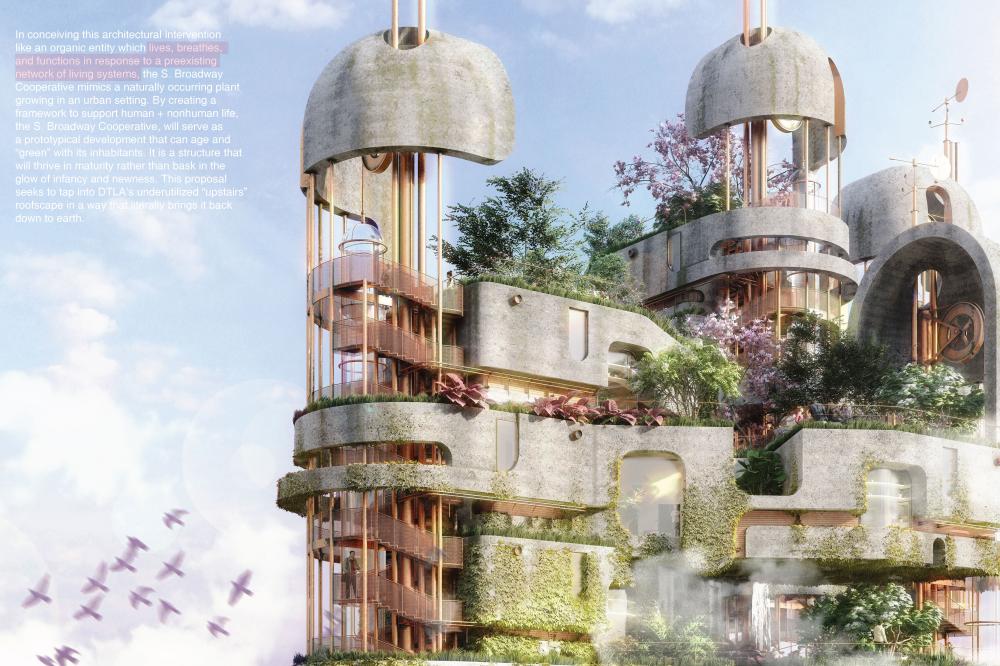This project offers suggestions for architectural adaptations for our plagued cities. Drawing from the innate characteristics of interwoven biological systems, this intervention in historic Downtown Los Angeles seeks to stitch, mend, fill, and bridge the gaps that disrupt the cyclical processes on which we rely. By cultivating uninterrupted, self-sustaining systems that provide residents with fresh food, clean water, purified air, a temperate micro-climate, and supportive housing, the South Broadway Cooperative serves as a model for adapting to and overcoming metropolitan plight.
In conceiving this architectural intervention like an organic entity that lives, breathes, and functions in response to a preexisting network of living systems, the S. Broadway Cooperative mimics a naturally occurring plant growing in an urban setting. By creating a framework to support human + nonhuman life, the S. Broadway Cooperative will serve as a prototypical development that can age and “green” with its inhabitants. It is a structure that will thrive in maturity rather than bask in the glow of infancy and newness. This proposal seeks to tap into DTLA’s underutilized “upstairs” roofscape in a way that literally brings it back down to earth.
Living systems - the self-organizing, interwoven, and adaptable networks sustaining all life as we know it - are, at their core, maintained by the constant flow and circulation of energy, matter, and information. Within these ecosystems, all organisms are constantly searching for life’s base-level physiological needs: food, water, air, and shelter. Human’s innate ability to adapt to the physical conditions of our environment has produced a remarkably sophisticated civilization containing additional layers of constructed systems that tend to far more than our physiological necessities. The most substantial and complex of these layered living systems can be found in our cities - hubs of culture, technology, innovation, and societal constructs. Life in modern cities serves needs and contains living systems unimaginable to prehistoric creatures.
What happens, though, when life in cities fails to provide for a human’s basic needs? When the living systems providing us with clean air, fresh water, nutritious food, and accessible shelter are cut off or disrupted by climate change, polluted resources, prejudice, and disease?
This project offers suggestions of architectural adaptations for our plagued cities. Drawing from the innate characteristics of interwoven biological systems, this intervention in historic Downtown Los Angeles seeks to stitch, mend, fill, and bridge the gaps that disrupt the cyclical processes on which we rely. By cultivating uninterrupted, self-sustaining systems that provide residents with fresh food, clean water, purified air, a temperate micro-climate, and supportive housing, the South Broadway Cooperative serves as a model for adapting to and overcoming metropolitan plight.
Ultimately, this proposal will free a city’s residents from their infrastructural binds - a reclamation of humanity’s basic survival needs from crumbling civic frameworks. In an effort to empower urbanity’s most vulnerable communities, this semi-removed societal anomaly utilizes contextual resources to power a cooperative living model that is self-propagated + scalar.
POSTURE
This urban adaptation relies on its mutualistic relationship with its context rather than deferring to parasitic architectural tropes. Like the mutually beneficial relationships between plants and fungi, the intervention draws from existing resources to foster its own growth while re-invigorating Los Angeles’ once-thriving Broadway District.
ORGANIZATION
The proposal adopts a plant’s basic structure and is guided by photo-tropic and hydro-tropic principles. An underlying ‘root system’ gathers, produces, and stores the intervention’s base needs; water + energy. The intervention’s ‘shoot system’ - the host building’s visible growth / addition - is therefore the scalar product of (time) x (environment). Stem-like towers shoot out from the host building and allow for the circulation of water, energy, and people. These stems support the building’s branches + leaves - compositions of modular elements forming a myriad of dwelling units.
ATTITUDE
In conceiving this architectural intervention like an organic entity which lives, breathes, and functions in response to a preexisting network of living systems, the S. Broadway Cooperative mimics a naturally occurring plant growing in an urban setting. By creating a framework to support human + nonhuman life, the S. Broadway Cooperative, will serve as a prototypical development that can age and “green” with its inhabitants. It is a structure that will thrive in maturity rather than bask in the glow of infancy and newness. This proposal seeks to tap into DTLA’s underutilized “upstairs” roofscape in a way that literally brings it back down to earth.
2021-2022 Design Excellence Award Winner
Blake Ahart
Advanced Design
Instructor: Clay Odom


